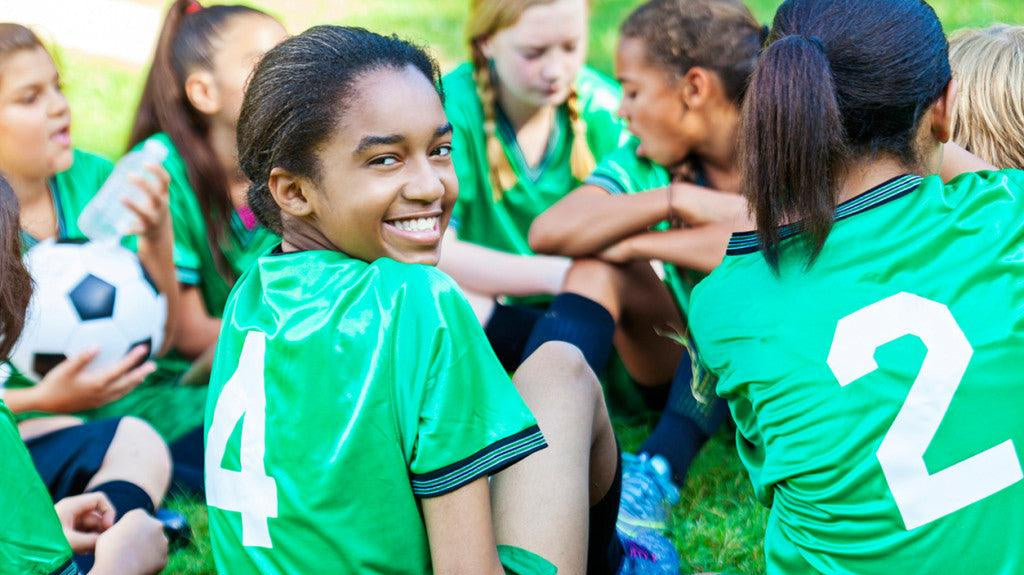Dragonwing Blog
Filter by
All
#Covid
#delivery
#jordansoccerstars
#LikeAGirl
#PlayLikeAGirl
#SaferSoccer
2014
2015
5K
8th grade
ACL
advertising
ambassador
American Ballet Theatre
athlete
athletes
athletic shirt
awareness
back to school
BackToSchool
balance
Balancing Busy
Barbie
base layer
baseball
baselayer
batontwirling
benefits of sports
best sports bras
black
Black Friday
Blackstone
blogger
body image
Boston Marathon
bra
brain
Brandi Chastain
breast cancer
breast cancer awareness
Breast Cancer Awareness Month
breathe
bundle
business
busy
buying sports bra teen
camp
camping
capri
capri leggings
CASL
Category_About Me
Category_Balancing Busy
Category_Breast Cancer Awareness Month
Category_Contests
Category_Dragonwing girlgear
Category_Female Athletes
Category_Female Sports Legends
Category_Girls Performance Wear
Category_Humor
Category_Inspirations
Category_National Women's Soccer League
Category_News
Category_Nutrition
Category_Outside of School
Category_Parenting
Category_Resources
Category_Reviews
Category_School
Category_Show us How You Rock It!
Category_Sports/Activities
Category_Swim Mom
Category_Tips and Advice to stay healthy and active
Category_Uncategorized
Category_Wise Words from Bad Cookies
Celia
centering
chill weight
chinese food
Cindy Parlow Cone
club soccer
coach
coach's gift
cold weather
college
Colorado
Colorado Mountain Mom
comfort
competition
compression shorts
concussion
confidence
contest
Corie Barry
Coronavirus
courage
Covid-19
customer review
customized
dance
daughter
dog
dogs
donate
dragonwing girl
Dragonwing girlgear
DragonwingGirl
dream
drink
easy
embroidery
EmmaH
Empower Girls
empowerment
essentials
excelle sports
Extra Precautions for fulfillment
fall
family
female athletes
Female Sports Legends
fencer
fencing
field hockey
FIFA
FIFA World Cup
first bra
fitted top
Fitting
foodie
foods for athletes
foods for athletic girls
fortunes
founder
friends
Fulfillment
fun
gifts for girls
girl
girl athlete
girl athletes
girl power
girl's first bra
girls
girls athletic apparel
girls athletic wear
girls compression shorts
girls hockey
girls on the run
Girls Performance Wear
girls soccer
girls sports
girls sports bra
girls sports cami
girls sports snacks
girls sportswear
giveaway
goals for girls
gold medals
GOTR
gratitude
Gucciardi
gymnastics
half tee
half tee sports top
Halloween
headbands
heading
healing
health
healthy
healthy future
high heels
high school
hiking
holiday gifts
holiday greetings
homework
honor roll
hydrate
hydration
India
Information
injury
injury prevention
inspiration
instagram
intense
intro
Jordan
Julia
karate
keyhole sports bra
kid's nutrition
knee
lacrosse
Ladies Only Sports
Laura
lax
lazy day
leggings
Lindsay DiStefano
logo
long sleeve top
Made in USA
Madi
make a difference
managing priorities
marathon
married
Martin Luther King
Mary Lou Retton
MaryAnne
media
memories
memory jar
mentoring
mesh
mesh racer
middle school
Mini Workout Short
Minnesota
mission
Misty Copeland
modern dance
mom
MomTrends
Mother's Day
motivation
netflix
new products
new season
New Year
New York Times
News
newyears
non-slip
NonperfectParenting.com
North Carolina
nutrition
nutrition for athletic girls
NWSL
October
olympics
Oprah
organize
outdoors
packing
parent
partners
PassHat
perfect fit
persistence
photo
Pink
poem
popular culture
portland thorns
positive body image
powerful
pre-teen
prize
protein
protein bars
Racer Sports Bra
Rampone
recovery after a workout
recuperation
research
Resources
rest
review
rock climbing
role models
Rugby
running
safety
sale
SarahG
school
school soccer
school spirit
seamless sports bra
senior year
Serena Williams
skiing
sleep
smile
snacks
snowboard
snowboarding
soar
soccer
soccer girl
soccer girls
soccer mom
social media
softball
spandex leggings
spandex shorts
spider
spirit wear
sponsor
sport parent
sports
sports bra
sports bras for girls
sports girls
sports headbands
Sports Mom
Sports Mom Survival Guide
sports nutrition
sports practice
sports snack
Sports/Activities
spring sports
startup
state championship
stereotype
style
summer
summer camp
Super Bowl
support
surgery
swim
swim meets
swim mom
swimming
team
team parent
teen
Thanks
think pink
throw like a girl
throwback
thumb holes
tips
Tips and Advice to stay healthy and active
traditions
training bra
transition
trunk show
TWC
tween
tween bra
Tweenhood
twirl
two children
Un-Dee
UNC
Uncategorized
Urban Rebound
USWNT
Valentine
Valentine's Day
video
volleyball shorts
wedgie
wedgies
weight
Weight Watchers
white
Wicking Sports Cami
winner
winning
winter
women athletes
women's world cup
Womens Soccer
work
workout shorts
World Cup
yoga
young girl
Zoe
The Power of a Girl's First Bra
I had the pleasure of talking recently with Kelly O'Brien, owner of Linger Tween, a shop that specializes in undergarments for tweens and teens. She's a big fan, as are...
The "why" of Dragonwing girlgear.
People often ask me why I am so passionate about sports and girls and I have a simple, important reason – we need this generation of girls, now more than...
New Barbie's Not a Winner
Mattel's recent introduction of three new "styles" of Barbie has received lots of media attention. The dolls are now being made with a variety of skin tones, but most of...
An Open Letter to Weight Watchers
Dear Weight Watchers: Thanks to your new spokesperson, Oprah Winfrey, you've been getting more airtime and press than usual recently. I'll add my voice to those, like MSNBC host Melissa...
Body Shaming Female Athletes Makes My Blood Boil
It's been an amazing few weeks for women's sports - from the Women's World Cup to Wimbledon. I've found myself in awe of the athleticism, teary-eyed with exhilaration and pride,...
5 Running Tips for Non-Runners
Since my mother is such a powerful and voracious runner, I'm often asked “do you run?” The inquiry always puzzles me. Am I talented at running? No. Do I have...
This one thing could keep your tween girl in sports
Thanks to Chris Deacon for her excellent journalism in the Sept 6 issue of Today's Parent. Her article follows! Studies show that girls start quitting sports in the tween years—this...


